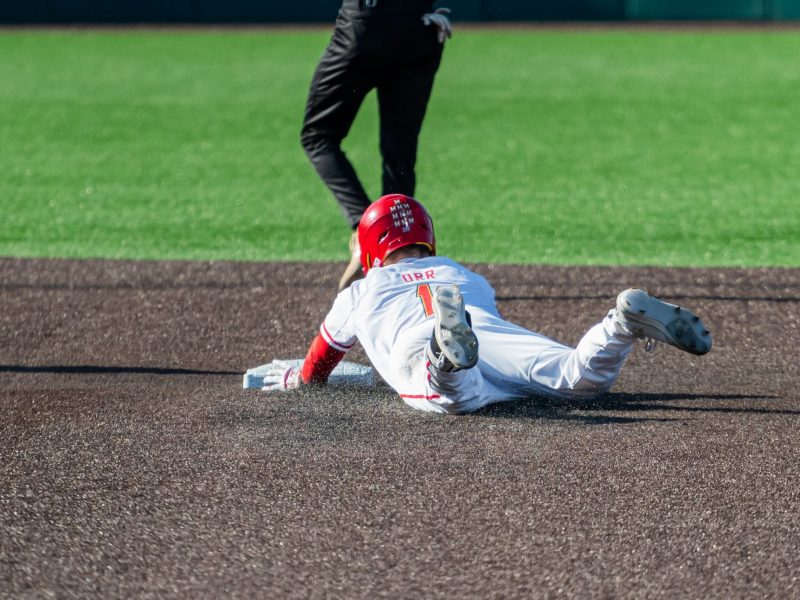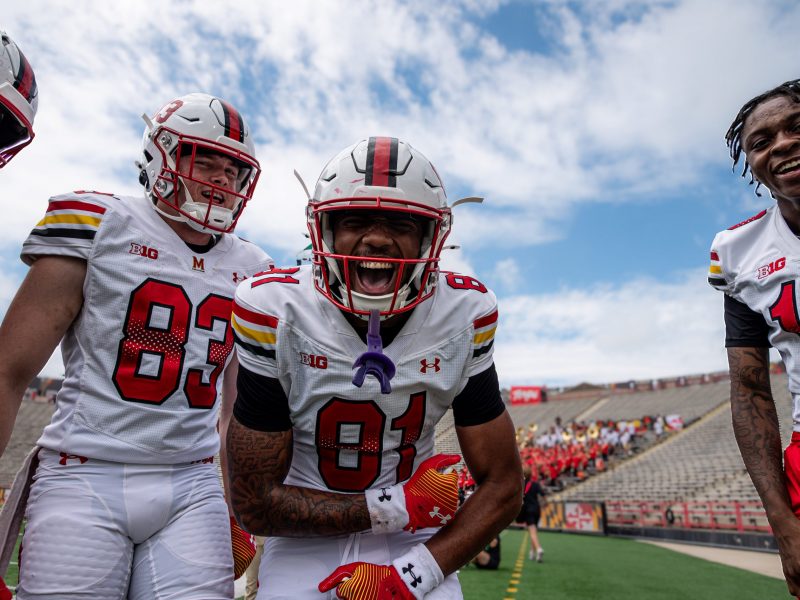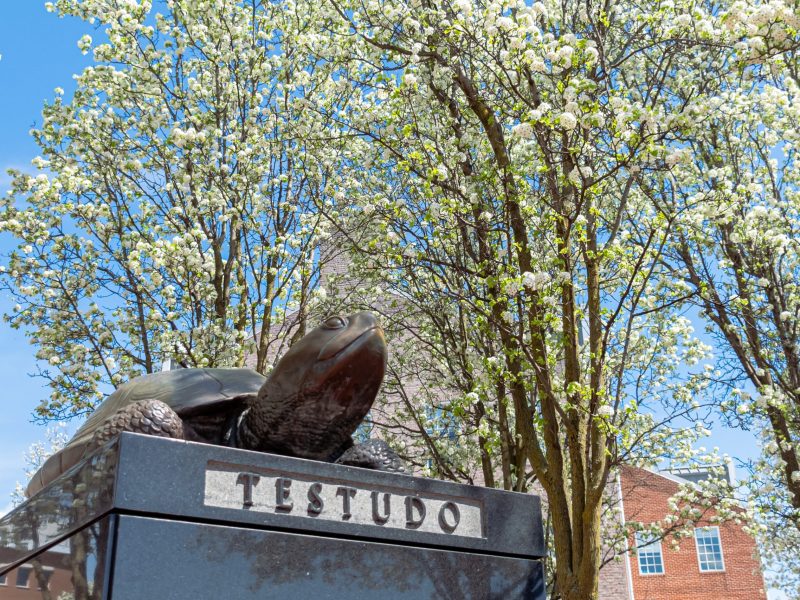Andrew Godzuk was having a good night.
The sophomore accounting major had just watched the men’s basketball team triumph over rival team Duke at his house, and he was on his way to grab a slice of celebratory pizza from Ratsie’s when he saw a flood of fans pouring into the middle of Route 1 only to be met by police in full riot gear.
Police officials said the use of force was necessary to disperse an unruly and destructive mob. Tear gas, rubber pellets filled with pepper spray, a helicopter, an armored vehicle, horses and other non-lethal weapons were deployed to maintain law and order downtown in the early hours of yesterday morning.
Godzuk was caught in the cross fire.
“I was just walking back like [police] said to,” Godzuk said. “They tackled me to the ground and were hitting me in the back and on the legs. I wasn’t causing any harm to anything or anyone.”
Godzuk was one of 23 students arrested during the riot. He was later charged with disorderly conduct.
After the streets cleared and students and police retreated to their respective sides, a new battle began — one of words and accusations.
Yesterday afternoon, about 35 students gathered in front of the Art-Sociology Building before marching to the Main Administration Building, demanding police stop using unnecessary violence to control crowds. About two hours earlier, Prince George’s County Police held a press conference denying accusations of brutality and excessive force.
“It came to a point where people became defiant. People started endangering innocent civilians and police officers. Our objective at that point was to restore peace in that community,” Prince George’s County Police Chief Roberto Hylton said at the press conference. “I think that everyone needs to understand that we wear a uniform for a specific reason. Everyone can identify who a police officer is. A uniform — that should prevent this type of an event, this type of behavior.”
The behavior of both officers and students was caught on tape by students with cameras and local news organizations.
A WUSA (Channel 9) video showed hordes of students chanting and jumping around in the middle of Route 1, brandishing street signs they had pulled from the sidewalk. The video also captured blood on the ground, police officers repeatedly shoving a student seemingly attempting to walk away and crowds of students walking back to their dorms and apartments, their hands raised above their heads as if to surrender.
Junior English major Peter Kramer was walking to Santa Fe Cafe when he came across a barrier of officers blocking the road. Kramer said he asked an officer if there was a way to get around the blockade, but he was told to go home. When he asked again, another officer responded with violence, he said.
“He punched me, kicked me in the side and pressed my face onto the ground with his boot,” Kramer said. “I didn’t do anything, and I got my ass kicked.”
Senior electrical engineering and physics major Santiago Bortman was walking to Route 1 from his house on Knox Road to meet some friends and celebrate. He didn’t get far from his house when he realized several police officers on horses were blocking off the street.
“I didn’t know where I could go to get around them, so I asked one of the cops,” he said. “He didn’t even answer me. He just hit me with his shield in the face. Once I was on the ground, he kept beating me with his night stick.”
Bortman said he has several welts on his arms and a swollen nose from the assault. After being taken to the police station, he claims officers told him that if he reported his injuries, he would be kept in jail until Monday.
“They told me, ‘If you keep quiet, you’ll go home tonight,'” Bortman said.
Kramer also said officers warned him against reporting his injuries.
“They told us if we wanted to get out, we had to be quiet,” he said.
At yesterday’s protest, student activists urged everyone involved in the riot to come forward and break the silence surrounding what they alleged was an “unprovoked, indiscriminate and brutal attack on Maryland students.”
Junior mechanical engineering major Bob Hayes, one of the rally’s organizers, said several student leaders wanted to create an opportunity for those affected to share their experiences and air their concerns.
But rather than airing their concerns, many of the students at the rally were quick to blame police response for how fast the situation escalated, saying the crowd was “peaceful” until officers reacted.
“If [police] cause a problem, there’s gonna be a problem,” senior English major Ivan Goldensohn said. “Damn right there was a riot last night because they brought the riot gear. They started it. They were there before the game even got out.”
Although the last-minute rally only attracted about 35 students, organizers and participants said that number is not indicative of how many students experienced police tactics firsthand.
“There may not be a lot of kids here today,” Goldensohn said. “But that doesn’t mean there aren’t a lot of kids walking around with bruises or squinting.”
County police officials claim that the use of rubber bullets was not authorized, but Hylton said he can’t rule out injuries caused by pepper pellets — small rubber balls that exploded to disperse pepper spray on contact.
“It all depends on the proximity,” Hylton said. “I’m sure there could be a tear [in the skin].”
Hylton said only four minor injuries were reported.
Some students, however, were left with bruises that won’t just heal with time. Senior English major Roxy Shorrock said her experience during the riot has made her question the trust she places in law enforcement.
“I felt so scared because these people are supposed to protect us and they did the opposite,” she said. “It was sort of a self-fulfilling prophecy. If you show up in riot gear, you’re going to get a riot.”
Staff writer Amy Hemmati contributed to this report. gulin@umdbk.com, redding@umdbk.com


